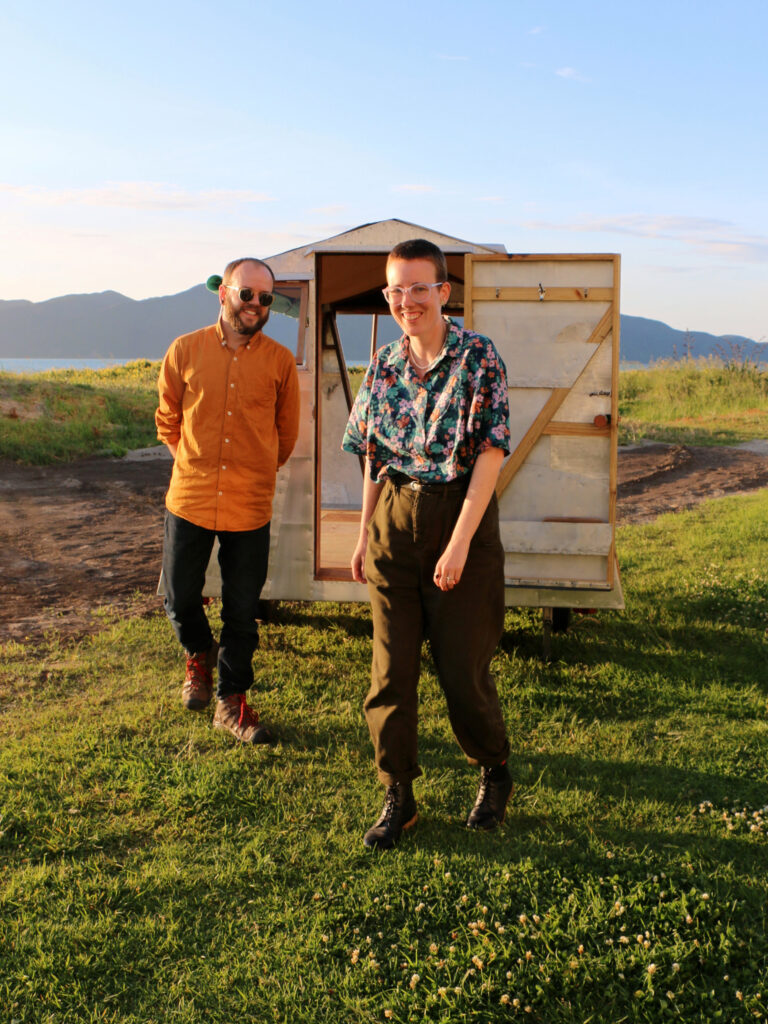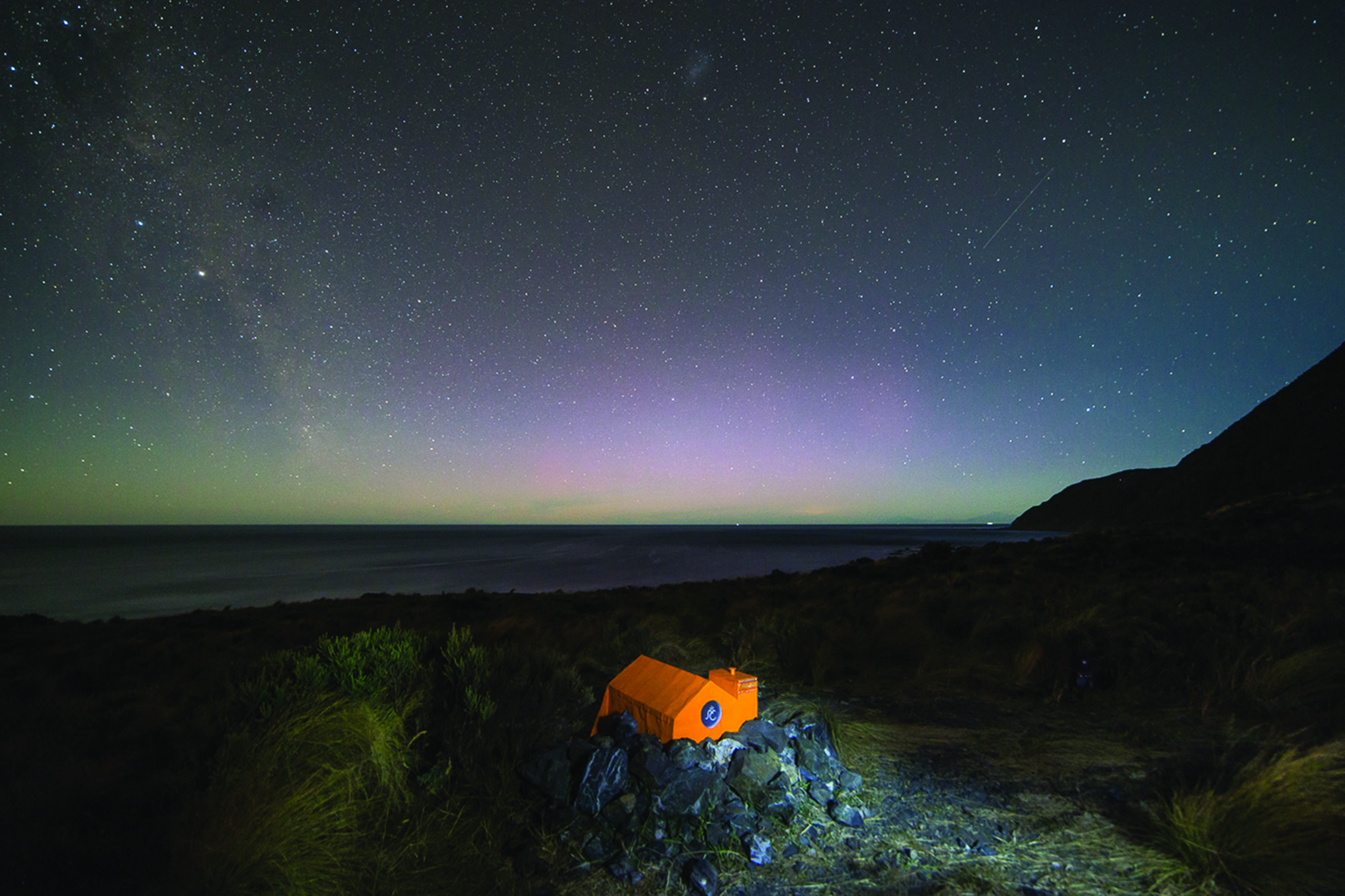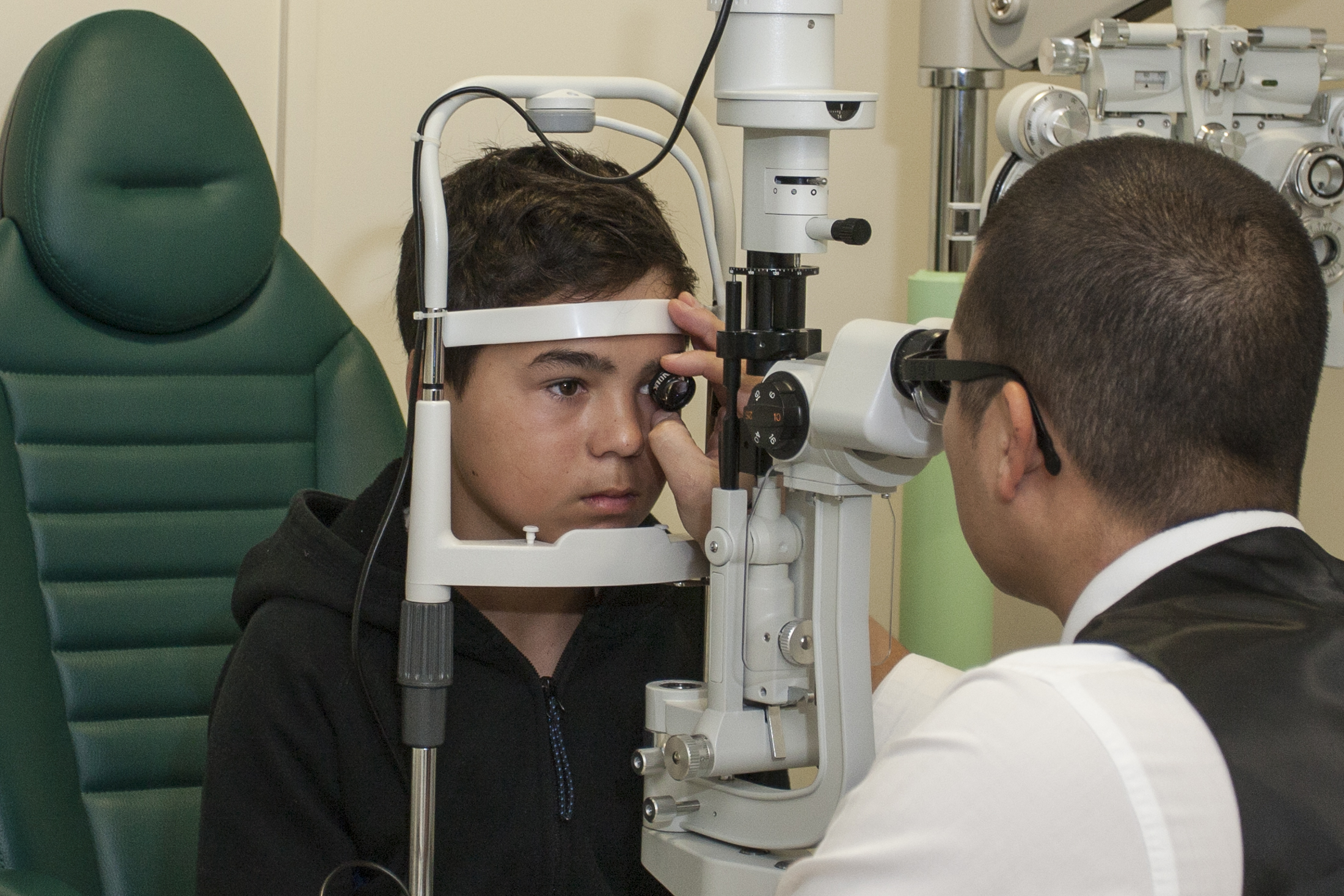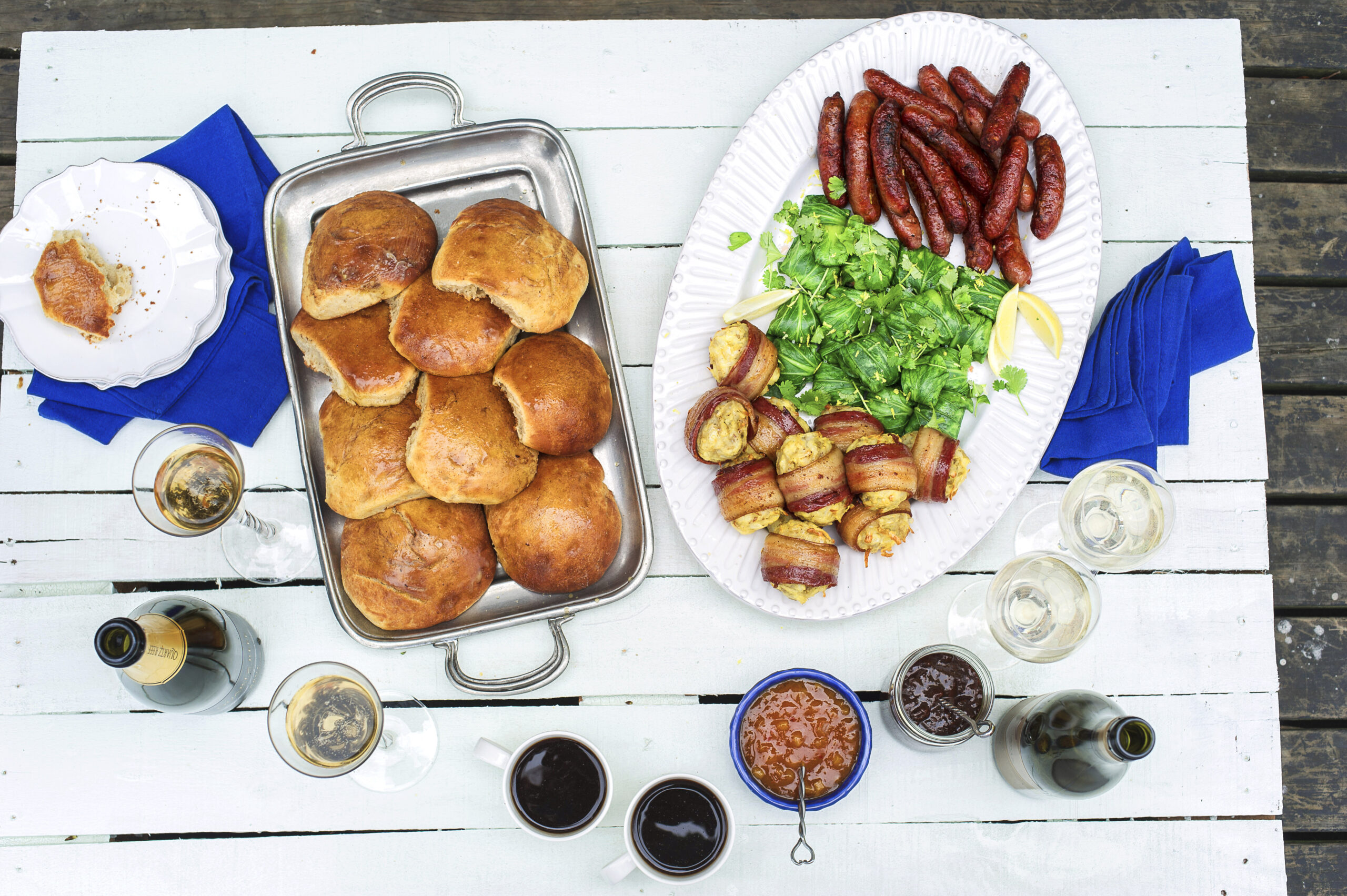Grab a map during NZ Festival of the Arts and lose yourself in the adventure of discovering hidden wild spaces and creations on walks along the Kapiti Coast.
Artists Kemi Whitwell and Niko Leyde of Kemi Niko & Co are the couple behind Urban Hut Club, an outdoor expedition along the Kāpiti Coast in search of bespoke little huts full of stories and imagination.
Together they have created an urban hut trail of five mini huts from Paekakariki to Otaki, collaborating with Kapiti Coast communities and using salvaged materials. Explorers are encouraged to leave their experience in the logbook located inside each hut.
Writers Mandy Hager, Apirana Taylor, Chris Maclean and Renée have also gifted each hut with its own short story.
We caught up with the pair about the project curated by Bret McKenzie for the New Zealand Festival of Arts.
When and how did you meet?
We met in 2009 when we became flatmates while studying at Massey University in Wellington. A few years later, after we’d both graduated, Kemi had the 2011/12 summer residency at Enjoy Gallery. He had designed an elaborate cardboard structure, full of wonders that filled the gallery, and Niko gave him a much needed hand in building it. Over that month of long days and nights we fell in love, discovered a shared passion and dedication to art and decided to join forces under our combined names.
How did Kemi Niko & Co come about?
As new graduates (Kemi with a Bachelor of Fine Art and Niko, an honours in Visual Communication) we soon realised that if we had any hope of succeeding in our chosen fields we needed to band together. We saw eye to eye on many crucial aspects of life, both prioritising well-being and creative expression over succumbing to a normal way of life. We already shared a home and after traveling India decided to make the most of this well located space. We converted our room into a studio, our deck into a workshop, and started making and installing interactive artworks for our neighbours in the local park. That’s where the & Co. in our company name originally came from; to acknowledge all the other people that help to inform our work.
Have you always worked together?
Yes, everything we do is a partnership. While we each have different skills, and sometimes pursue individual projects, we always attribute our work to Kemi Niko, regardless of who did the creative labour. This stems from our core understanding of ‘life as art’ and that all aspects from keeping our bodies healthy, finding funding, raising our daughter, doing admin and making art are all equal parts of the process.
What’s it like working together?
After almost eight years working together we are like a well-oiled, symbiotic machine. We understand each other and get on with our own tasks before coming together to check in when need be. Having a base of shared values, love and respect has helped us get through the many struggles over the years. It isn’t easy having all aspects of your life combined, especially when you have a child to raise too, but we find ourselves growing stronger as individuals and as a team, which is very rewarding.
What do you like doing together outside of work?
We run away into the bush. We take our daughter into nature or the beach and go exploring, near or far. It’s hard to define what is outside of work for us, so we try to enjoy everything we do. We are very blessed to be making a living from what we love doing.

How did the opportunity to collaborate with Bret McKenzie come about?
We did a similar project with seven huts in Wellington back in 2014 when we were pretty fresh, so it was always in the back of our minds to have another go. A chance encounter with Bret McKenzie in a Wellington park lead to the New Zealand Festival offer to make it a reality. The happenstance of that moment was crazy. We gave Bret the project book for that last hut project, Miniature Hikes, which we just happened to have on hand and he goes ‘I’ve been looking for you.’ Turns out he loved that project and had been trying to find out who the artists were! We were all set to move to the West Coast so we built Roaming Hut down there before coming back up to Kāpiti to build the five other huts. Bret has been hugely supportive and trusting of our process; working with him, and the festival team, has been a dream.
The huts are made from sustainable materials – why was that important to you? And how do you source the materials?
We use salvaged materials for a couple of reasons. Sourcing directly means it’s easier to find quality natural materials that add a level of character and history that new materials can’t match. Collecting materials for this project has been quite easy, we spent a couple of weeks visiting different worksite skips and home sheds gathering a huge range of native timbers, windows, hazel rod shoots, dimensional timber and vintage fixtures. Buying new is unnecessary when you have the extra time to source from building waste streams and have good community connections. The materials also inform the designs as we build, which is a satisfying and humbling process and it connects us to the traditional hut building process of the backcountry.
Is living sustainability in general important to you both?
Yeah, definitely. We started Kemi Niko & Co. as our values aligned on living symbiotically with our art practice and this informs many aspects of how we live. Using salvaged materials as much as possible is a big one. We visit tip shops often, they are the first place we start looking whenever we need anything, for art or home. Reducing our waste and eating whole unprocessed foods has many benefits for us and our environment, locally and globally. We try to keep our values at the core of everything we do which keeps us mindful and grateful for all we have.
For Urban Hut Club, you’ll be collaborating with the Kapiti community – what will that involve?
When selecting our five hut sites we chose places that not only had incredible natural beauty, but also active community groups looking after them. These groups are a huge help to us, they have been involved right from the start. Early on we talked with them about what the reserve or dune area means to them as well as the history of their group and used these conversations as starting points for the designs. It’s hugely important to get the groups support so they love the huts and become the kaitiaki for them once we have left the area. While the huts are all temporary sculptures they will last as long as they are cared for.
What’s next for Kemi & Niko Co after Urban Hut Club?
We really don’t know. We were stable for 10 years in Wellington and since we moved on in May we have enjoyed being nomadic down in Westland and on the Kāpiti Coast. Our daughter is steadily approaching school age so we’ll need to settle eventually. Living from the land is a big dream for us, somewhere to put down roots. We are open to any opportunities that may come our way. We prefer to take cues from life rather than make strict plans, it’s working out pretty well so far!

For more about the NZ Festival of the Arts programme visit here.





